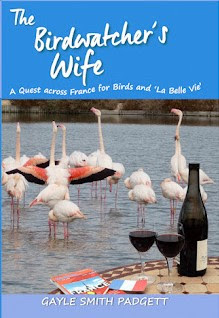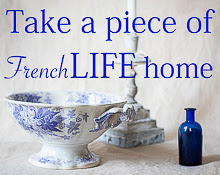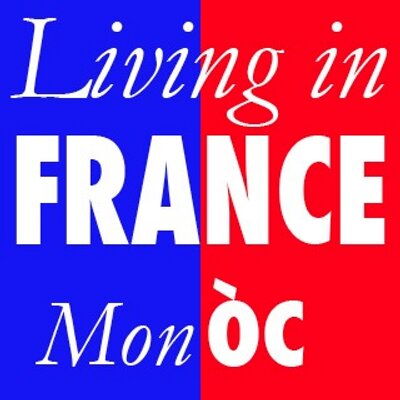Three years in the works, the Fondation Vincent Van Gogh Arles will open to the public on Monday April 7th with an inaugural exhibit called Van Gogh Live!
The Fondation will underscore and celebrate the inseparable link between the paintings of the Dutch artist and the city of Arles, by showing his work alongside the work of contemporary artists. The museum says its goal is to "showcase and promote van Gogh’s artistic heritage while also asking questions about the resonance of his oeuvre in art today."
The museum is located at the Hôtel Léautaud de Donines, a 15th-century building elegantly restored by Guilaume Avenard and Hervé Scheider of the architectural firm Fluor, who say that the light of Arles was their “guiding thread.” It's located in the heart of Arles' historic center, a setting classified as a UNESCO World Heritage Site. The Fondation comprises more than 1000 square meters of exhibit space spread over two floors.
For the city of Arles this is huge and everyone is all abuzz. It does seem like the perfect way to honor the beleaguered artist, who, it is said, never sold a painting in his lifetime and yet, "elevated this town and its surrounding countryside to icons."
The first show, which runs until August 31st, juxtaposes two separate exhibits. Colours of the North, Colours of the South was curated by Sjraar van Heugten, former director of collections at the Van Gogh Museum in Amsterdam. It retraces the evolution of Van Gogh's palette from darkness towards "southern brightness" and presents a dozen van Gogh pieces alongside those of his contemporaries who influenced him: Courbet, Pissarro, Monet, Monticelli and others.
The second part of Van Gogh Live! is an exhibit of nine contemporary artists paying homage to Van Gogh. The artists and the works were selected by the museum's artistic director Bice Curiger.
Also to be unveiled on April 7th are permanent installations specially commissioned for the museum's entrance.
Friends who've already been in to see the museum report that it's fabulous...and that the views of Arles from the upper terrace are magnificent.
Tired of the busy city life and the cold northern climate, Van Gogh had headed south in search of the warmth, bright light and colors of Provence. According to his brother Theo, he went "first to Arles to get his bearings and then probably on to Marseille." Van Gogh found in the beautiful countryside of Arles what he had been looking for and never moved on to Marseille.
Around Arles he found the light, color and harmony that he knew and loved from Japanese prints...and he started to paint Japanese-inspired blossoming trees and the Pont de Langlois. In summer he drew and painted harvest scenes.
Painting the human figure had always been one of Van Gogh’s most important artistic goals and he had a special love for peasant paintings. In Arles, he decided that he wanted to modernize this genre by choosing the subject of the sower. He painted portraits and still-lifes as well, confessing to Theo : "I am painting with the gusto of a Marseillais eating a bouillabaisse."
In May, Van Gogh rented the famous Yellow House (Maison Jaune), where he lived and worked. He had hopes of establishing a collective studio in the South, were other painters would join him and in October, 1888, Paul Gauguin came to Arles. The two artists lived and painted together for two months. It was a time of great mutual inspiration but eventually their artistic temperaments clashed. On December 23, 1888, Van Gogh suffered a breakdown and cut off part of his left ear. (Actually a recent theory by two German art historians has it that it was actually Gauguin who cut off the famous ear.) Gauguin left and Van Gogh’s dream of a studio with other painters was shattered. He was hospitalized twice in Arles, in the 16th and 17th-century Hôtel-Dieu; he painted and drew its beautiful courtyard, which you can just wander easily into today. (It's now called the Espace Van Gogh.) Finally he had himself voluntarily committed to the Clinique St. Paul in St. Rémy on May 8, 1889.
In St. Remy, the Clinique St. Paul is a lovely and very-popular tourist site. The sections where patients are treated remains closed to the public but you can visit Van Gogh's rooms, read his letters, buy art made by the current patients, enjoy the flowers in a beautiful cloister and see the van Gogh paintings reproduced on panels on the grounds, as part of a larger Van Gogh trail.
In May 1890, Van Gogh left St. Remy to be closer to his physician Dr. Paul Gachet in Auvers-sur-Oise and also closer to Theo. He died in July of that same year, 1890, at age 37. He is believed to have shot himself with a revolver although no gun was ever found.
In 1988, the collection was presented publicly for the first time, during celebrations for the centenary of the arrival of Van Gogh in Arles. Its development then intensified quickly, both in the quality of its exhibitions (Picasso, Bacon) and in its publications. Today the collection contains major pieces from the worlds of literature, poetry, music, photography, theatrical costuming (Christian Lacroix) and much more.
In 2008, the mayor of Arles offered to lodge the collection in a museum at the Hôtel Léautaud de Donines; the organization finally received state approval in 2010. Work started in 2011 and Bice Curiger, a world-renowned art critic and exhibition curator, was brought aboard as artistic director the following year.
Finally, next week it's all opening, ''under the high patronage'' of President Francois Hollande.
Highly instrumental in bringing the museum to life was board president Luc Hoffmann, the grandson of the founder of the Swiss pharmaceutical company Hoffmann-La Roche, who bought a large estate in the Camargue near Arles in 1947. A world-renowned environmentalist and philanthropist, Luc's lifetime's worth of achievements includes co-founding the World Wildlife Fund, establishing the Parc Naturel Régional de Camargue (which he ran for many years) and authoring some 60 books.
Luc's daughter Maja Hoffmann--Fondation board member and president of the artistic committee-- grew up between Switzerland and the Camargue. She has devoted her life to continuing the family's philanthropic and environmental legacy but is known above all for her passion for contemporary art. She's currently president of the International Council of the Tate (London)--and one of the Tate's trustees--and sits on the boards of scores of other top art museums worldwide. She's also a developer and co-owner of a number of popular Arles area hotels and restaurants.
For general Arles info, the Tourist Office site is here.
Finally, if you want to read a fascinating article, Van Gogh's Ear: The Christmas Eve That Changed Modern Art, by Adam Gopnik from the New Yorker, click here.
Photos: (1) This is an architect's rendering as the facade is still getting its finishing touches in advance of the opening this week. (2) Museum interiors. (3) The logo and other elements of the museum's visual identity (signage, website, etc.) were designed by Studio Marie Lusa in Zurich. (4, 5) Van Gogh's Autoportrait avec Pipe et Chapeau de Paille, 1887 and Guillaume Bruere's Untitled are both in the opening exhibit. (6, 7) Van Gogh's La Maison Jaune ('La rue'), 1888, and his April, 1889 painting of the courtyard at the 17th century Hôtel-Dieu (Espace Van Gogh), where he was hospitalized twice.






























































.jpg)
















Julie, van Gogh's story is so fascinating!. I would so love to see this extraordinary exhibit!
ReplyDeleteXoxo
Karena
Thanks - reblogged your post.
ReplyDeleteJulie, You've given us quite an earful here! (Sorry, I had to use an ear pun!) But seriously, van Gogh's story offers mystery and inspiration to artists and art lovers alike. The Fondation in Arles sounds like a magnificent stop on a beautiful tour, which I look to you to help all of us plan. Thank you!
ReplyDeleteLots of love, xoxo,
Susan
Thanks for this Julie - I am so excited for the opening! The Fondation really is gorgeous from the outside and I was walking by for the arrivals of the Van Goghs last week. :)
ReplyDeleteIf anyone even faintly interested in Van Gogh hasn't read the incredible book of letters between him and his brother Theo, you are doing yourselves a grave disservice. One of the most impactful books of my life, it's called "Dear Theo."
ReplyDeleteJulie, thank you for this comprehensive post! Arles has always been a favourite town of ours to visit and the new Fondation urges us to return soon. Also, thanks to Anonymous above for the book recommendation!
ReplyDelete